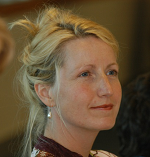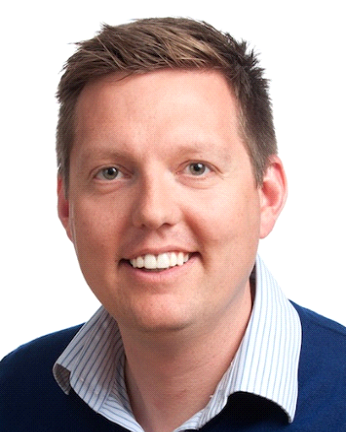
Hi,
Thanks for visiting my page.
I am committed to practices that improve the learning and response capacity of organisations, groups, and communities to the global, national and local environmental challenges they face.
I run my own consultancy providing social research, facilitation and evaluation expertise into environmental management initiatives and research programmes. I also actively support the linkage of biophysical and social science relationships through advice, mentoring and the development of interdisciplinary networks.
Specialist areas of work that I stay up-to-date on include:
- Integrating different knowledge within complex decision-making settings
- Building capacity for collective learning
- Communication & engagement on natural hazard risk
- Collaborative governance
- Managing the interface between research and practice in environmental management
From an original background in ecology and natural resource management I developed an interest and expertise in collaboration, communication and learning systems.
Before starting my independent consultancy I worked for Landcare Research (1997 – 2010).
I have a PhD in social learning and environmental management (a copy is hosted online at the site learningforsustainability.net)
I have worked in this area for over 20 years across a range of issues including fresh water,biodiversity, catchment management and natural hazard management.
Clients include regional councils, central government agencies and research institutes.
I am lucky to work in a number of great teams with people from a range of different disciplines.
This interdisciplinary collaboration has led to some unique achievements and our work being recognised – particularly for bridging research and practice.
New! 2020 New Zealand Planning Institute’s John Mawson Award of Merit (see news item here)
My work regularly involves research – developing new ideas and approaches, facilitation – helping people come together to lean about complex environmental issues; and consultancy – directly contributing to addressing current needs for local and national government agencies.
Below are some recent examples For a copy of my short CV
Margaret Kilvington CV 2020
Research
New models of collective responsibility –
Our Land and Water
exploring connection of people to land and water (in association with Cawthron Institute)
Local government options to manage risk for existing communities under the RMA, Funded by resilience to natures challenges in association with GNS Science
Risk communication and engagement in land use planning. – in association with GNS (Geological and Nuclear Science Research Institute)
Improving the value and use of science information by local government
– in association with GNS Science
GNS Science MS64 Doing it better (PDF)
GNS Science SR2016\057 Role of science in landuse planning (PDF)
Consultancy
Facilitation and coordination of the SWIM (Surface water integrated management) SIG strategy process (Feb – Sept 2020)
Design and support risk communication & engagement for regional policy development
- As part of a risk based approach to land use planning – Bay of Plenty Regional Council.
GNS Science MS86 I can live with this (PDF)
Frameworks for planning that can motivate change
- The Ruamāhanga Whaitua (water management committee)– Greater Wellington Regional Council.
Understanding How Change is Motivated: Workshop for water management decision makers (PDF)
Facilitation
Soil health and resilience: Oneone ora, tangata ora:
Workshop on new directions for soil health, May 2019 – (For
Manaaki whenua Landcare Research
)
Multi-disciplinary science forum on predicting and managing tipping points in productive systems
Nov 2016 (For the National Science Challenge on Biological Heritage).
www.biologicalheritage.nz/programmes/natural-capital/tipping-points
Glistening Waters I & II July & Nov 2016
Integration of environmental modelling for freshwater planning for the Ruamāhanga Whaitua (water management committee) and Greater Wellington Regional Council.
www.gw.govt.nz/ruamahanga-whaitua
Facilitator for the Fresh Water Management Cross Regional Council forum 2010 – 2016
Part of the VMO programme (Freshwater Values, Monitoring and Outcomes) coordinated by Landcare Research.
I am a member of
ANZEA
(Aotearoa New Zealand Evaluation Association) and an associate of the Joint Centre for
Disaster Research.
I am also an associate of Will Allen and Associates – Learning for sustainability learningforsustainability.net/
While I work in a number of different teams, I do have some long standing collaborations with a number of colleagues:
Dr Will Allen
Will is an independent systems scientist, action researcher and evaluator, with 30 years’ experience in sustainable development and natural resource management.
His work largely takes place in participatory and learning-based contexts, to help stakeholders develop a shared understanding around goals, actions and indicators.
Will also works to help people to bridge local, indigenous and organizational perspectives.
Will runs an online resource website with regularly updated papers, articles and links for those working on social learning and constructive action particularly in the field of environmental management.
Dr Ben France-Hudson
Ben is based at
Otago University Law School
where he teaches and researches the law and theory of private property, with a focus on natural resources and land law.
Ben also sits on the Property Law Reform Panel of the New Zealand Law Society and in 2019 he was appointed as a Public Member of the New Zealand Media Council .
Recently, Ben’s research has focused on property law and the anticipated effects of climate change.
Collaboration with GNS Science and Margaret Kilvington lead to the report Reducing risk through the management of existing uses: tensions under the RMA – recently awarded the New Zealand Planning Institute’s John Mawson Award of Merit.
Dr Wendy Saunders
Dr Wendy Saunders has over 10 years’ experience in land use planning for natural hazard risk reduction at GNS Science.
Wendy works to link research understanding about natural hazard risk reduction to applied planning and policy contexts in New Zealand and internationally.
In 2012 Wendy graduated with her PhD on an innovative approach to risk-based land use planning, which received the New Zealand Planning Institute 2012 Wallace Ross Graduate Research Award.
This approach – now available as an online toolkit
(
www.gns.cri.nz/Home/RBP/Risk-based-planning)
provides guidance on how risk can be quantified and qualified for planning policy and resource consents, with a focus on the consequences of an event, rather than the traditional likelihood focus.
In 2013 wendy was selected as a world social science fellow; and over the last three years wendy has been involved in representing the new zealand crown in the risk-based christchurch replacement district plan hearing process for natural hazards.
Jim Sinner
Jim is a senior social scientist at the Cawthron Institute in Nelson, New Zealand.
With a background in economics, political science and public policy, Jim collaborates across multiple disciplines.
Recent projects involve research on understanding values and how they are used in policy, collaborative processes,
collective action for managing diffuse pollution, and structured decision making.
Jim leads a research programme called Te Whakakotahitanga mō te taiao: New models of collective responsibility for land and water,
part of the Our Land & Water National Science Challenge, working with catchment groups in four case studies in various NZ regions.
Full List of publications (PDF)
Risk, management, communication & land use planning.
These publications are part of ongoing research into improving public and local government capacity for good land use decisions affected by natural hazard risk. This work has received recognition by the New Zealand planning institute and the Commonwealth association of planners
-
Reducing risk through the management of existing uses: tensions under the RMA
Grace, E.; France-Hudson, B., Kilvington, M. GNS Science Report 2019/55. Available
here
-
Gaining public input on natural hazard risk and land use planning. A case study from New Zealand. Kilvington, and Saunders, W.S.A (2018) Disaster Prevention and Management: An International Journal, Vol. 28 Issue: 2, pp.228-244. Available
here
-
Innovative land use planning for natural hazard risk reduction : A consequence-driven approach from New Zealand. Saunders, W.S.A.; Kilvington, M.2016, International Journal of Disaster Risk Reduction, 18:244-255;
-
“I can live with this" Bay of Plenty Regional Council public engagement on acceptable risk. Kilvington M. & Saunders W.S.A. 2015, GNS Science Miscellaneous Series 86 71p. Available
here
Improving the links between science and practice
This work explores some of the common concerns experienced by both planning agencies and scientists around the socialisation of knowledge and how technical information can be made better use of in decision making.
-
The role of science in land use planning: exploring the challenges and opportunities to improve practice. Kilvington M. & Saunders W.S.A. 2016, GNS Science Report 2016/057 . Available
here
(you might also be interested in this blog article by Jim Schwab)
-
Doing it Better: Improving scientific guidance for land use planners.
Kilvington M & Saunders WSA 2013, GNS Science Miscellaneous Series 64.
Available
here
Integrated, transdisciplinary research
These papers are two of the many outputs from the decade long
Integrated Catchment Management Programme
based in the Motueka valley in the Nelson region of New Zealand.
They focus on different aspects of working with lay and technical ideas about environment management.
-
Creative platforms for social learning in ICM: the Watershed Talk project
Kilvington, M., A. Atkinson, and A. Fenemor (2011), New Zealand Journal of Marine and Freshwater Research, 45, 3, 557-71.
-
Three frameworks to understand and manage social processes for integrated catchment management
Kilvington, M., W. Allen, and A. Fenemor (2011), New Zealand Journal of Marine and Freshwater Research, 45, 3.New Zealand Journal Marine and Freshwater Research, 45(3): 541-555





